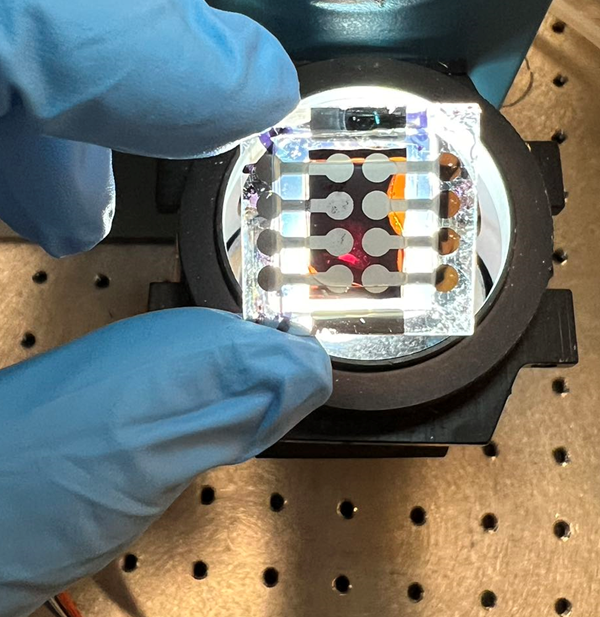An international research team has developed an all-perovskite tandem PV device that reportedly exhibits reduced recombination losses in the cell’s lower apparatus and remarkable stability. To improve the surface of the perovskite solar cell, the scientists created partially non-conductive and non-functional regions that protect the perovskite region below from defects.
A group of researchers led by the University of Toronto in Canada have fabricated an all-perovskite tandem solar cell with a wide bandgap bottom cell based on tin-lead (Pb-Sn) perovskite with a limited number of passivating defects and reduced interface recombination.
“Our work presents an effective strategy to improve the sustainability of this new photovoltaic technology, accelerating the practical application and commercialization of perovskite solar cells,” said the study’s corresponding author Chongwen Li. pv magazine.
“Our group has made great progress toward making pure lead perovskites a viable green energy source,” said co-author Ted Sargent. “However, Li’s method is conceptually different from previous studies. This study used diamine chelation chemistry focused on tin-containing perovskite, in which a metal ion forms a stable bond with a molecule that has two nitrogen atoms that hold the metal in place. The method is new in the field of perovskite solar cells.”
“While previous work from Sargent’s group has attempted to reduce the defects on the perovskite surface, this time we have created partially non-conductive and non-functional regions that protect the perovskite region beneath from defects,” Li added. “We used a new chemical method to improve the surface of the perovskite solar cell. By adding diamine to the surface, we removed extra tin and adjusted the tin-to-lead ratio to be more balanced. The diamine also created a stable barrier layer that helps protect the surface from oxygen and heat from the air.”
The research team built the tandem device with a substrate made of glass and indium tin oxide (ITO), a hole transport layer (HTL) made of nickel(II) oxide (NiOx) and called phosphonic acid methyl substmodified carbazole (Me-4PACz)a wide bandgap perovskite absorber treated with 1,2-diaminopropane (DAP), an electron transport layer (ETL) based on buckminsterfullerene (C60), a gold (AU) metal contact, a PEDOT-PSS layer, a low band gap perovskite absorber, another ETL made of C60, a tin oxide (SnO2) buffer layer, and a metal electrode.
“The chelate barrier layer induces a more n-type doped perovskite film surface, with the work function increased from about 4.81 eV to about 4.45 eV, and we expect that this should facilitate electron extraction and reduce interfacial non-radiative recombination , resulting in improved open-circuit voltage,” the scientists explained.
The performance of the DAP treated tandem cell was tested under standard lighting conditions and found to be an efficiency of 28.83%, an open circuit voltage of 2.19 V, a short circuit current density of 15.59 mA/cm2 and a fill current density of 15.59 mA/cm2 to reach. factor of 83.4%. Moreover, it was able to maintain more than 90% of its original efficiency after 1000 hours of operation at the maximum power point under simulated illumination of one sun in the sky without cooling.
“Our diamine chelation strategy effectively suppresses oxidation and extends operational stability. This is because diamine chelation forms high-resistance barriers, similar to the passivated emitter-back contact structure used in silicon solar cells,” concluded co-author Lei Chen. “These high-resistance barriers provide a novel and effective passivation mechanism for stabilizing and perfecting mixed tin-lead and all-perovskite tandem solar cells, moving this technology closer to commercialization.”
The new approach was presented in the paper “Diamine chelates for increased stability in mixed Sn-Pb and all-perovskite tandem solar cells”, which was recently published in nature energy. The research group also included academics from the University of Toledo, the University of Washington, the Lawrence Berkeley National Laboratory, the Georgia Institute of Technology and the University of Massachusetts Amherst in the United States, as well as King Abdullah University of Saudi Arabia. Science and Technology (KAUST) and Japan’s Tohoku University.
This content is copyrighted and may not be reused. If you would like to collaborate with us and reuse some of our content, please contact: editors@pv-magazine.com.

